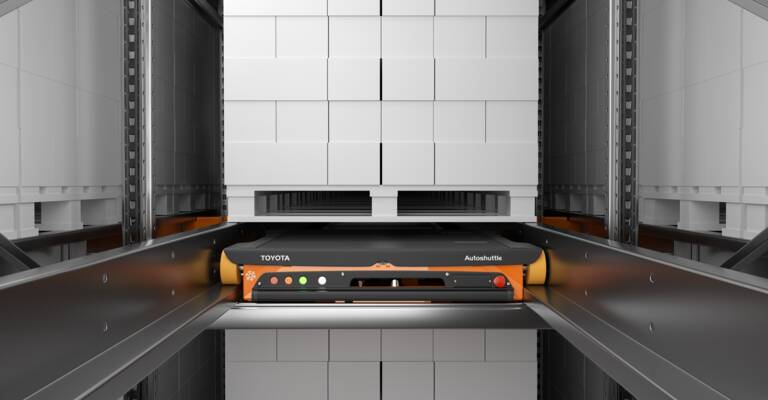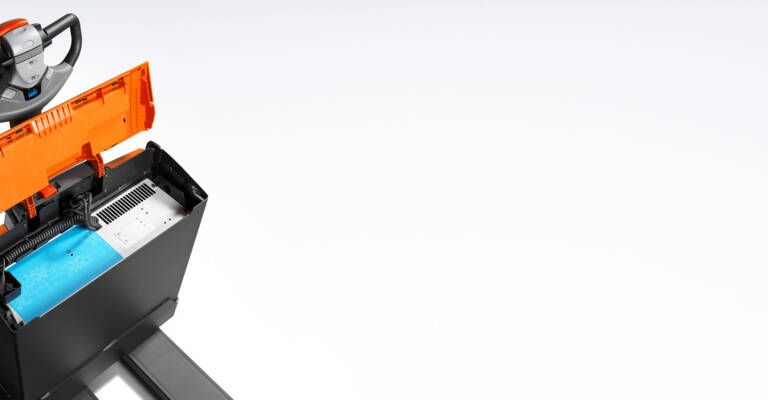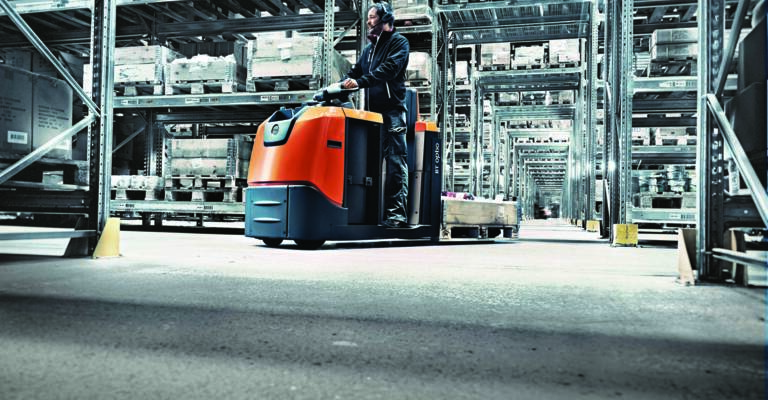
Temperature-controlled environments
Available lean solutions for cold zones
Dedicated cold store trucks for maximum uptime
- For temperatures down to -30°C
- Dedicated cold store specifications & add-ons for each model
- Service contract tailored to your needs
The complete truck range of Toyota has been designed to work effectively down to 0°C without modification. However, for temperatures down to -30°C most trucks will need to be adapted. Specific features can include stainless steel, cold store oil, anti-slip platforms, heated batteries, etc. Toyota offers a range of warehouse trucks including hand pallet trucks, order pickers, reach trucks and Very-Narrow-Aisle trucks (VNA), as well as counterbalanced trucks that can be fully engineered for cold store use. Some trucks require little modification, for example, Toyota BT Levio pallet trucks and BT Staxio stacker trucks simply need low-temperature hydraulic oil – in all other respects they are pre-engineered for cold stores with fully sealed components. All cold store machines are clearly defined by the snowflake symbol. This helps drive down costs by reducing the risk of trucks being incorrectly used.
Everything you need to know about logistics in temperature-controlled environments
Why do I need a dedicated cold store truck?
Cold store operations are one of the toughest material handling challenges. Sub-zero temperatures may affect your trucks’ battery capacity, electronics, lubrication, bodywork and drivers’ ability to operate the truck. Efficiency and uptime are crucial in frozen storage of perishable goods (such as fish, meat, fruit, dairy, etc). Therefore, to prevent breakdown and repair costs, dedicated cold store trucks are highly recommended. Depending on the model, the trucks are fitted with the necessary components (cold store oil, stainless steel axles, cold store platform, …) to keep productivity high in cold environments.
To find out which trucks and specs fit in your cold operations, contact us to get more information or order a site survey.
Why should I choose Toyota as material handling partner for temperature-controlled environments?
Our trucks and solutions are used in virtually every sector & environment. You can choose from a wide offer of material handling equipment, including manual and automated trucks, all built according to the high-quality standards of the Toyota Production System. But also different energy solutions, several types of racking that fit your goods and available space, and service tailored to your needs covering a wide network within Europe.
How can I minimise condensation issues in cold store?
Condensation is one of the biggest technical challenges for your cold store operation. When going from a cold to an ambient zone, moisture will form all over the truck, which can freeze to ice when going in the cold again, damaging the truck’s components. That’s why we recommend having a chilled room outside the cold store area to minimise condensation on trucks and loads. Or to stay outside the cold area until the truck is dry before entering again. Another alternative is to stay in the cold store as long as possible: li-ion batteries for cold store allow operators to drive and charge in cold store for a long period.
How to improve working conditions in cold environments?
Besides proper clothing and training for the operators who have to work in temperatures as low as -30°C, fully enclosed cabins with heaters are also available. These will keep them warm and healthy, helping them to stay productive throughout the shift. In combination with the lithium-ion battery with heater, the truck can also be charged within the cold store area during breaks. Offering high efficiency, while eliminating the need for battery exchange and condensation problems.
Which battery type is best suited for cold store?
Both lead-acid and lithium-ion batteries can operate in cold store. But did you know that lead-acid batteries lose a significant amount of energy when operating within a cold store environment? Lithium-ion batteries on the other hand lose little to no battery performance within the cold store and have an energy efficiency that is up to 30% higher than lead-acid. This allows for a longer running time, and in combination with the ability to charge within the cold store thanks to our battery heater solution, the trucks are able to perform continuously throughout the shift. Having the truck always within the cold environment prevents condensation issues that occur when entering and exiting a cold store frequently.
How to maximise use of space within cold store?
The use of space in cold environments is extremely important as refrigerated air is expensive. Particularly in cold rooms with temperatures as low as -30°C, the space should be filled as efficiently as possible. Shuttle racking solutions and/or mobile racking are good ways to maximise the use of space whilst keeping throughput high.




